Classification of Mathematics by 42 Branches
I often read questions about our classification scheme that we use on physicsforums.com to sort posts by science fields and subjects, what has to be studied first in order to learn something else, what is a good way through physics or mathematics in self-study or simply about the desire to understand, e.g. general relativity theory or the quantum world, or to understand what is meant when people refer to abstract algebra or topology. Threads with such questions usually provide a few very good answers in posts 2-9. A lot of own experiences come next that rarely reflect the circumstances the thread starter is in, posts 10-31, and finally, a discussion of life, the universe, and everything, posts 32 until someone closes the debate.
Any classification is necessarily incomplete and by its nature a compromise among personal flavors, cultures, languages, or historically given practices. So will be mine here, incomplete and driven by personal opinion. Nevertheless, I’ll try my best to explain the various branches of mathematics, and where they are used, i.e. to my best knowledge, their applications in mathematics as well as in other sciences, especially physics. However, this article is about mathematics, the science called mathematics. If it is said that e.g. logic applies to all other sciences, then it is never the entire mathematical field called logic that applies. Many-valued logical calculi e.g. are rarely used outside of logic itself. First-order logic, also known as predicate logic, or quantificational logic on the other hand is basically the foundation of almost any other science. Hence, a comment universally applicable is justified, even if only parts are meant.
Some topics such as Lie Theory, K-Theory, Representation Theory, and others cut across the entire classification scheme, just as physical chemistry encompasses areas such as electromagnetism, thermodynamics, crystallography, and more. Some branches as e.g. algebraic geometry could be seen as a part of general geometry, as a part of abstract algebra, or as a field in its own right. It’s finally not important where a subject is listed. The essential information is what it contains.
Applications: I will abbreviate scientific fields by a three-letter code in order to save time, but far more to ease reading and to provide search keys. For example, if you want to know which kind of mathematics is necessary to understand quantum physics, search for QFT.
$$\begin{array}{llllll} \text{UNI}&\text{universal} &&&&\\ \hline \\\text{MAT} &\text{mathematics}&&&&\\ \hline \\\text{ALG}&\text{algebra}&\text{DGE}&\text{differential geometry}&\text{NUM}&\text{number theory}\\\text{ALY }&\text{algebraic geometry}&\text{GEM}&\text{geometry}&\text{STC}&\text{stochastic mathematics}\\\text{ANA}&\text{analysis}&\text{MEM}&\text{meta-mathematics}&\text{TOP}&\text{topology}\\\text{CPS}&\text{computer sciences}&&&&\\ \hline\\\text{PHY}&\text{physics}&&&&\\ \hline \\\text{ATP}&\text{atomic physics}&\text{EMF}&\text{electromagnetism}&\text{REL}&\text{relativity theory}\\\text{CLP}&\text{classical physics}&\text{QFT}&\text{quantum field theory}&\text{THD}&\text{thermodynamics}\\ \hline \\ \text{OTH}&\text{other sciences}&&&&\\
\hline \\\text{AST} &\text{astrophysics}&\text{ECO}&\text{economical sciences}&\text{MEP}&\text{meta-physics}\\ \text{BIO} &\text{biology}&\text{EGI}&\text{engineering}&\text{MET}&\text{meteorology}\\ \text{CHE} & \text{chemistry}&\text{GEO} &\text{geology}&\text{POL} &\text{political sciences}\\\text{CSC} &\text{computer science}&\text{MED}&\text{medical sciences}&\text{SOC}&\text{social sciences}\end{array}$$
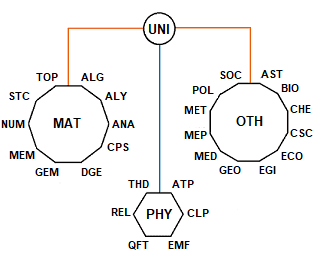
Some sciences will mainly occur under their general bracket physics (PHY) or other sciences (OTH). Classical physics (CLP), for example, and mathematics share historically a large part of their development. The mathematical tools it uses are therefore used in all other parts of physics, too. The same is true for classical fields of mathematical applications like biology (BIO), chemistry (CHE), economical sciences (ECO), medical sciences (MED), meteorology (MET), political sciences (POL), and social sciences (SOC). Certain algebras occur in genetic biology, and certain geometric figures and groups occur via crystallography in chemistry. The main mathematical tools, however, are probability theory and statistics. And they are important to all other sciences, too.
Table of Contents
Logic and Set Theory
… is the science of deduction and how to collect objects in a meaningful way. It defines true, false, and eventually neither right nor wrong, or other many-valued logical systems together with rules of allowed implications. It shows that the mathematical branch logic is more than the first-order logic (predicate logic) all sciences commonly use today. The set-theoretical foundation of all sciences is the axiomatic system named after Ernst Friedrich Ferdinand Zermelo and Adolf Abraham Halevi Fraenkel. It solves Bertrand Arthur William Russell’s antinomy about the set of all sets that do not contain themselves as an element. This paradox was recognized independently by Zermelo and Russell who first published it. However, there is still a problem left between logic and set theory. If we have a collection of non-empty sets, then there is a function that selects one element from every set. Of course, one is tempted to say, that it is certainly no problem to construct such a function given finitely many sets. But what about infinitely many sets? The existence of that function is called the axiom of choice. The axiom of choice is consistent with the Zermelo-Fraenkel set theory which has been proven by Kurt Friedrich Gödel in 1938. So ZFC (Zermelo Fraenkel + Axiom of Choice) is what mathematicians mainly use. Twenty-five years later in 1963, however, Paul Joseph Cohen proved that the negation of the axiom of choice is also consistent with Zermelo-Fraenkel. It is independent. And, whether you believe that you can take one roll from an infinite number of baskets full of rolls or not, cannot be decided within Zermelo-Fraenkel’s set theory. The axiom of choice is the mathematical version of uncertainty. Mathematics was long a part of philosophy before we used it more and more for natural sciences. Logic and set theory are still topics in philosophy, too.
1-App.: UNI – MAT – PHY – OTH – MEM – MEP
Geometry
… means literally the measurement of the earth. The measurement part is certainly essential to most fields that carry the word geometry, but the earth part on the other hand has first become a plane and a three-dimensional flat space, then spaces with curvatures, and finally algebraic, and topological manifolds. The algebraic manifolds, called algebraic varieties deal with zeros of polynomials and have lost their focus on measurement. But geometry in general is the science of angles, lengths, and distances.
2-App.: MAT – PHY – OTH
Euclidean Geometry
… is the kind of geometry that we learn at school: angles, distances, straights, triangles, circles, cubes, pyramids, etc. Its defining properties are flatness and the fact that parallels never intersect. It is named after Euclid (3rd century BC) who wrote the famous Elements, originally 13 volumes about arithmetics and geometry. The Elements was used as an academic textbook for more than 2,000 years and until the second half of the 19th century the most widely distributed work in world literature after the Bible.
3-App.: MAT – PHY – AST – CHE – EGI – GEO
Non-Euclidean Geometry
… are basically all other geometries. However, the term often refers to a more restrictive sense, namely those geometries in which the parallel postulate isn’t valid anymore, i.e. parallels are allowed to intersect. The first results have been achieved by Nikolai Ivanovich Lobachevsky, János Bolyai, and Carl Friedrich Gauß who investigated hyperbolic surfaces and their geometry at the beginning of the 19th century.
4-App.: GEM – AST – EGI – GEO
Projective Geometry
… emerged in the first half of the 19th century from the perspective representation of three-dimensional objects in the two-dimensional plane. There are no parallels in projective geometry in contrast to ordinary Euclidean geometry. Jean-Victor Poncelet made significant contributions in 1822, and Karl Georg Christian von Staudt in 1847. Ordinary points are represented by homogeneous coordinates
$$
(x\, : \,y\, : \,z) = (\alpha\cdot x\, : \,\alpha\cdot y\, : \,\alpha \cdot z)= \left(\dfrac{x}{z}\, : \,\dfrac{y}{z}\, : \,1\right)
$$
and points at infinity as ##(x\, : \,y\, : \,0).##
5-App.: GEM – QFT – GEO
Analytical Geometry
… describes the geometric pendant to linear algebra, i.e. vector calculus. Its main tool is a – usually Cartesian but not exclusively – coordinate system, a framework that isn’t necessary for general geometry. The beginning of analytical geometry with René Descartes could well be considered the beginning of modern mathematics.
6-App.: MAT – PHY – AST – CHE – EGI – GEO
Algebraic Geometry
… is the theory of zeros of multivariate polynomials. It combines algebra, namely ring theory, with the geometry of these sets. Its main theorem, Hilbert’s Nullstellensatz says that for every proper ideal ##I## of multivariate polynomials in ##\mathbb{C}[x_1,\ldots,x_n]## there is a point ##a\in \mathbb{C}^n## such that ##f(a)=0## for all polynomials ##f\in I.## This is a higher dimensional generalization of the fundamental theorem of algebra that every complex polynomial has a zero. Algebraic geometry enables coordinate systems on sets where multivariate polynomials vanish.
7-App.: ALG – ALY – TOP – CPS
Differential Geometry
… combines analysis, namely vector fields and manifolds with geometry. It is central to many scientific fields since differential equations model 100% of our descriptions of nature. We automatically have vector fields and flows through them as solutions to differential equations whenever we model natural phenomena. Manifolds are loosely speaking curved spaces. Our home planet as well as the entire universe are curved spaces, even though the planet is locally flat and the universe globally flat. And we want to measure them, i.e. apply geometry.
8-App.: PHY – DGE – ANA – TOP – ALG – AST – CSC – EGI – GEO – MET
Algebra
… is the theory of given structures and functions between them that respect these structures, called homomorphisms. Its number of subfields is accordingly. The word is Arabic and means to reunite broken parts. Its content reaches back to ancient times in the Babylonian empire when it started with calculations, an association still valid in today’s anglophone world, and took a long way up to now where we consider, e.g. structures like genetic algebras.
9-App.: MAT – PHY – OTH
Linear Algebra
… is the most basic branch of algebra. It is the theory of vector spaces and the linear transformations between them. Linear algebra not only deals with obvious objects like Euclidean planes, and Platonic solids but also with infinite-dimensional, tangent, and operator spaces. It is important to basically every other science that uses mathematics.
10-App.: MAT – PHY – OTH
Abstract Algebra
… collects all algebraic branches which are not immediately important to other sciences. It is pure mathematics in the first place and deals with certain families of structures and has their classifications as its central general subject.
11-App.: MAT
Group Theory
… is about the classification of groups. Groups are sets with a binary operation that is associative, has a neutral element, and is invertible, ordinary addition of integers for example. Other examples are groups of congruence transformations of geometric objects, automorphism groups, or matrix groups. So far, we have classified finite abelian groups and finite simple groups. Abelian means that the binary operation is symmetric, simply means that such groups do not have subgroups that occur as the kernel of a group homomorphism. However, we are far from understanding the classification of other types of finite groups, e.g. solvable or nilpotent groups. Infinite groups are even more diverse.
12-App.: ALG – CPS – GEM – NUM – QFT – CHE – CSC
Ring Theory
… deals with sets that have an additive group, and also a multiplication. They are connected by the distributive law, but multiplication is not required to form a group. Even zero as the result of the multiplication of non-zero elements is allowed. The most prominent example is the integers. Others are polynomials or such things as the hour marks on a classical clock. We have a couple of properties to sort rings, e.g. Noetherian, Artinian, or Euclidean rings, but the task to classify rings is as huge as it is for groups.
13-App.: ALG – ALY – NUM
Field Theory
… is about rings with a multiplication that forms a group, i.e. we have a one and can divide elements. Examples are rational, real, or complex numbers. Fields can also be finite, e.g. ##\mathbb{F}_2=\{0,1\}## forms the smallest possible field. What distinguishes this field from rational numbers is mainly that ##1+1=0## whereas adding ones as a rational number never gets zero. This property is called characteristic, ##2## in case of ##\mathbb{F}_2,## ##0## in case of ##\mathbb{Q},## and it is one among others to sort fields. A major part of field theory is the investigation of field extensions. They are sorted by properties like finite, separable, Galois, algebraic, or transcendental.
14-App.: ALG – ALY – CPS – NUM
Galois Theory
… is a part of field theory since Galois extensions are a special kind of field extension. Its classification aspect and why I give it its own branch is due to its applications rather than the theory itself. Galois theory negatively answers all three classical construction problems (squaring the circle, doubling the cube, and trisection an angle by compass and straightedge), and that zeros of polynomials of degree five and higher cannot generally be expressed by algebraic terms with only roots. It is one of the few cases in mathematics where we can prove the absence of a solution.
15-App.: ALG – NUM
Commutative Algebra
… in our taxonomy means the theory of commutative rings with a multiplicative identity element ##1.## It is an important part of general ring theory since it contains the ring of integers, and polynomial rings and is therefore fundamental to algebraic geometry. The main objects that are considered by commutative algebra are modules and ideals like prime ideals, the Jacobson ideal, or radical ideals.
16-App.: ALG – ALY – NUM – TOP
Linear Algebraic Groups
… are the multiplicative groups that belong to linear algebra and therewith to many other sciences. Linear algebraic groups are groups of matrices, unitary, orthogonal, symplectic, general linear, special linear, Heisenberg, Poincaré, or Lorentz, to name a few.
17-App.: ALG – ALY – DGE – GEM – TOP – PHY – CHE – CSC
Theory of Algebras
… is the theory of sets that are vector spaces with a distributive, i.e. bilinear multiplication. It is a very large branch of algebra. An – incomplete – list of structures that are and carry the name algebra is: Lie, Cartan, Engel, Jordan, Clifford, Graßmann, Boolean, Hamilton, Cayley, Virasoro, Banach, Borel, Iwahori-Hecke, Hopf, Weil, genetic, sigma, associative, non-associative, unitary, commutative, division, group, matrix, operator, incidence, tensor, graduated, nilpotent, solvable, simple, super, polynomial.
18-App.: ALG – ANA – DGE – PHY – BIO – CSC – MED – POL – SOC
Homological Algebra
… is the theory of structures, not about a certain structure, but about what different structures have in common. Whether we consider vector spaces, fields, or topological spaces, we always have structures of a kind and homomorphisms between them. Homological algebra proves theorems that hold for vector spaces as well as for fields, or topological spaces. It is quite theoretical and almost meta-mathematics. Furthermore, and reason for the name, is to perform differentiation, geometry, and topology by purely algebraic means, i.e. investigation of objects by associating algebraic invariants.
19-App.: ALG – ALY – DGE – GEM – TOP
Analysis
… is the basis of any science that uses mathematics. It is the theory of all kinds of functions over real or complex numbers with real or complex vectors as variables, some exotic exceptions excluded.
20-App.: UNI – MAT – PHY – OTH
Real Analysis – Calculus I
… is where it starts from, functions
$$
f\, : \,\mathbb{R}\longrightarrow \mathbb{R}
$$
21-App.: MAT – PHY – OTH
Real Multivariate Analysis – Calculus II
… is what makes it interesting for physics, functions in higher dimensions
$$
f\, : \,\mathbb{R}^n\longrightarrow \mathbb{R}^m
$$
22-App.: MAT – PHY – OTH
Complex Analysis – Function Theory – Calculus III
… is the theory of complex functions. Things change fundamentally when we consider complex domains. One might expect that complex analysis is basically bivariate real analysis. This couldn’t be wronger. The reason is simply that we cannot imagine a complex vector stretched by a complex number. It doesn’t point in a direction we could visualize without case-to-case calculations. A derivative is always a directional derivative, hence a complex derivative is a complex directional derivative. But what is a complex direction?
$$
f\, : \,\mathbb{C}\longrightarrow \mathbb{C}
$$
23-App.: MAT – PHY – OTH
Measure Theory
… starts with the observation that a function changes dramatically from smooth, e.g. ##f\, : \,x\longmapsto x^2,## to non-continuous if we set ##f(\sqrt{3})=\pi## and leave all other points as is. However, the function if we draw it hasn’t really changed. The artificial gap can easily be ignored. Such a tiny gap is of measure zero, and the function is still smooth almost everywhere (else). Measure theory provides the mathematical rigor to such considerations.
24-App.: ANA – STC – ATP – THD – OTH
Differential Equation Systems
… are how we describe change: ##\dot{x}=c## describes linear motion, ##\ddot{x}=c## acceleration, ##\dot{x}=x## growth, ##\dot{x}=\alpha x-\beta xy\, , \,\dot{y}=\delta xy-\gamma y## the population sizes of predator-prey societies, and $$
\dot{S}=\nu N-\beta \frac{SI}{N}-\mu S\, , \,\dot{I}=\beta \frac{SI}{N}-\gamma I-\mu I\, , \,\dot{R}=\gamma I-\mu R
$$ the progress of a pandemic. Differential equations are as diverse as investigated quantities are, natural or man-made. They are the rules by which quantities change.
25-App.: MAT – PHY – OTH
Topology
… is literally the science of location. Other than geometry, topology doesn’t necessarily require a metric to measure distances and angles. Its central objects are continuous functions. A function is called continuous if all preimages of open sets of this function are open, too. Open sets are thus what defines a topology, or better, the other way around: we call a topology a collection of open sets which has certain properties: the empty set and the entire considered space are open sets, finitely many intersections of open sets are open sets, and arbitrary many unions of open sets are open sets. In the end, it is the abstraction of an open interval ##0<x<1## on the real number line. But we not only dropped the metric. We also changed the objects. The most famous example is the fact that a doughnut and a mug are topologically equivalent. That is, topology considers the kind of location, counts the number of handles, or holes, or considers knots.
26-App.: MAT – PHY
General Topology
… deals with the vast number of topological spaces. There are many properties by which topologies can be classified. The most important ones are the separation axioms. They determine whether and how points and sets can be distinguished, separated.
27-App.: MAT – PHY – MEP
Knot Theory
… considers the embedding of one or more circle lines into the three-dimensional Euclidean space, e.g. the trefoil knot; or spheres in higher dimensions. For a long time, dealing with knots was of purely theoretical interest. In the meantime, however, there are a number of important applications, for example in biochemistry or structural biology, which can be used to check whether complicated protein folds match other proteins.
28-App.: TOP – BIO
Functional Analysis And Linear Operators
… are the sciences of – in general infinite-dimensional – topological vector spaces and the linear functions between them. In physics, these are often Hilbert spaces and differential operators. The term operator means function. However, since the topological spaces themselves are often spaces of functions, e.g. smooth functions, the use of operator avoids confusion. Functional analysis is a combination of topology, analysis, and algebra.
29-App.: MAT – PHY – AST
Differential Topology
… could also be seen as a subfield of differential geometry. However, topology is not so much about measurement as it is about structure, for example, groups that are simultaneously analytical manifolds, Lie groups. The fundamental theorem of Amalie Emmy Noether
A conserved quantity belongs to every continuous symmetry of a physical system.
belongs to differential topology. Other topics are affine connections, tangential bundles, or covariant derivatives.
30-App.: MAT – PHY – AST
Number Theory
… is along with geometry the oldest part of mathematics. The central concepts of all its subfields are various domains of numbers and their prime elements. Prime elements are not invertible and if they divide a product, then they already divide one of its factors. Number theory experienced a major boost after Pierre de Fermat Jr. published the following note from his father Pierre de Fermat Sr.
Cubum autem in duos cubos, aut quadratoquadratum in duos quadratoquadratos, et generaliter nullam in infinitum ultra quadratum potestatem in duas ejusdem nominis fas est dividere: cujus rei demonstrationem mirabilem sane detexi. Hanc marginis exiguitas non caperet.
It is the origin of what we now call Fermat’s last theorem:
$$
x^n+y^n=z^n\quad (x,y,z\in \mathbb{Z},n\in \mathbb{N})
$$
can only be solved for ##n=1## and ##n=2.## Its proof is more than sophisticated and it took more than 350 years and a genius named Andrew John Wiles to find it, although dozens of people have tried before. It can be shown that it is sufficient to prove it for ##n=4## (Bernard Frénicle de Bessy – 1676, Leonhard Euler – 1738) and for prime numbers. This gives a little insight into the importance of prime numbers.
31-App.: ALG – ALY – CPS – GEM – NUM – CSC
Discrete Mathematics
… is the algebraic part of number theory. It deals with rings and finite fields, and therewith primes again. Discrete mathematics often provides the mathematical basis for coding theory, cryptography, or crystallography.
32-App.: ALG – ALY – CPS – GEM – NUM – CHE – CSC
Analytical Number Theory
… develops around the question of how prime numbers are distributed among all numbers, cp. the still unproven Riemann hypothesis. It uses analytical methods, i.e. various functions to examine the properties of integers.
33-App.: CPS – NUM – CSC
Stochastic Mathematics
… is in my mind the most important branch of mathematics as a language for descriptive sciences. One has to understand random variables and probability distribution functions when natural phenomena are investigated. E.g., there is a convention in particle physics of speaking of an “indication” for effects from ##\sigma =3\; (0.15 \%)## and from a “discovery” only from ##\sigma =5\; (0.00003 \%)##. This is irreversible: A ##5-\sigma## proof does not mean that there is a ##99.99997 \%## probability that a new – or even a specific – particle is present. The standard deviation only says something about statistical fluctuations in the measurements, not about the effect itself! Stochastic mathematics teaches us the mathematical background.
34-App.: NUM – ANA – STC – ATP – QFT – THD – OTH
Probability Theory
… is the theory of random variables and their distributions, the mathematics of data, and randomness. The key events are an exchange of letters between Blaise Pascal and Pierre de Fermat in 1654, commonly regarded as the birth of classical probability calculus, and the publication of Andrei Kolmogorov’s textbook Basic Concepts of Probability Calculations in 1933. Famous theorems are the law of large numbers, the central limit theorem, convergence theorems, or statements like the 1-2-3 theorem
$$ P(|X-Y|\leq 2) < 3 \cdot P(|X-Y|\leq 1).$$
35-App.: NUM – ANA – STC – ATP – QFT – THD – OTH
Statistics And Tests
… is the application part of stochastic mathematics where hypotheses are considered with respect to their likelihood of validity. The size of samples, the distribution of errors, and their margins play important roles. E.g., the ##\chi^2##-distribution test was legally confirmed in Germany as part of the application of Benford’s law as a method for a tax authority to object to the correctness of accounting data. Benford’s law says that the probability of a digit ##d## as the leading digit in decimal-represented, empirically given data is
$$
P(d)=\log_{10}\left(1+\dfrac{1}{d}\right)
$$
This means that the probability that empirical numbers start with a ##1## or a ##2## is almost ##50\%.##
36-App.: STC – PHY – OTH
Algorithmics
… ranges from the view of algorithms as an abstract counterpart to a program specifically tailored to a machine, varying over a wide range of abstraction levels, to an actual list of instructions for such a machine, a program. Algorithmics as part of mathematics is more of the former, and a program is a verbal description rather than code, called a method, a procedure, or an algorithm.
37-App.: ALG – ALY – CPS – NUM – CSC
Numerical Analysis
… is about certain methods to calculate a quantity, e.g. the Newton-Raphson method, a root finding algorithm, or the Runge-Kutta method for stochastic and ordinary differential equations. The examples show that it is about actual calculations, error analysis, and runtime computations.
38-App.: CPS – PHY – OTH
Mathematical Optimization
… is the selection of a best element, with regard to some criterion (target function), from some set of available alternatives (feasible set) described by constraints. It is generally divided into two subfields, discrete optimization and continuous optimization, that describes whether the variables are found in a region of a lattice or a region in space, usually of a finite dimension. It should be obvious that mathematical optimization covers a lot of different kinds of problems, linear, non-linear, convex, stochastic, or variation problems to name just a few. It is even a useful tool for decision-finding processes in management science.
39-App.: ALG – CPS – DGE – PHY – OTH
Automata, Formal Languages, And Complexity Theory
… is the mathematical part of computer sciences. Computers are abstracted by automata and Turing machines, which are simple machines that accept a certain formal language and come to hold on an input sequence or not. Complexity theory deals with the measurement of how long this will take, and of how many steps a solution requires. The Chomsky hierarchy and the famous problem of whether ##P=NP## or not belong here.
40-App.: CPS – MEM – MEP – CSC
Codes
… in the mathematical sense refer to algorithms that send information. Coding this information is supposed to automatically correct errors (maximum likelihood method, maximal Hamming distance) or improve the signal-to-noise ratio.
41-App.: CPS – CSC
Cryptography
… is about sending information such that potential eavesdroppers cannot identify the content. Tools to achieve this are trapdoor and hash functions. Often are number theoretically difficult to solve problems involved like in the RSA algorithm that relies on the difficulty to factor large numbers.
42-App.: CPS – CSC

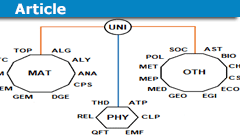


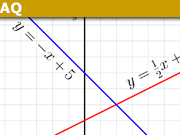
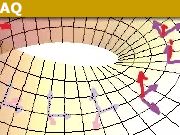

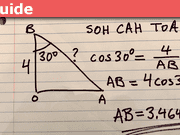


Leave a Reply
Want to join the discussion?Feel free to contribute!